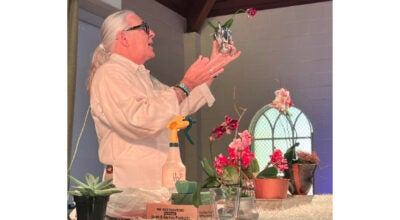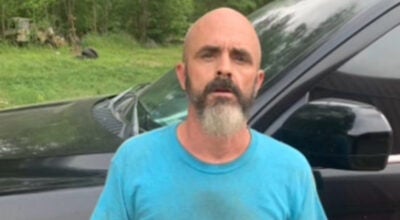Vidalia waiting for $11 million grant for port
Published 12:26 am Sunday, December 4, 2011
VIDALIA — The Vidalia loading and unloading facility, an almost two-decade long idea, could receive a green light this month in the form of an $11 million grant.
The 40-acre port facility is awaiting confirmation of the grant through the Transportation Investment Generating Economic Recovery program, which is part of President Obama’s American Recovery and Reinvestment Act, said Heather Malone, Concordia Parish Economic and Industrial Development District executive director.
The grant would allow for phases two and three to get under way. Currently the port is in the final stages of phase one.
Phase One
Through a $1.25 million grant from the U.S Economic Development Administration and a $1.5 million grant from the U.S. Department of Transportation, an access road from the port to Louisiana 131 is nearly complete.
The concrete road begins on the east side of Louisiana 131 and stretches to the base of the levee.
Construction has begun on another access road on the opposite side of Louisiana 131 into Vidalia’s industrial park.
Malone said the port will be the perfect complement to the 240-acre industrial park and provide great opportunities for Concordia Parish.
“This is a great amenity to our industrial prospects in our region,” Malone said. “It’s in great proximity to serve the entire parish because it’s just north of Highway 15, which takes you directly to Ferriday’s park, and you can continue to go south to Monterey, which is where our largest agriculture plantation is located.”
Phases Two and Three
Once the CPEIDD receives notification on the $11 million grant, Malone said a timeline for phases two and three will become more concrete.
“Anytime you get government money, it just takes a long time,” Malone said. “Once we identify the funding, we can know a better timeline of when we can start the rest.”
The remainder of the project includes construction of the actual port, including a loading pad, which would contain a bulkhead dock and structures for barges to tie off and load and unload from the river.
“Once we get the road completed, we’ll have everything in place to start the next process,” Malone said. “We are chipping away at it one step at a time.”
If the city receives the $11 million grant, a deadline to begin construction with those funds is 2013.
Master plan
Before any construction can begin on the actual port, Malone said the city must complete a port master plan to the Louisiana Port Construction and Development Priority Program.
The plan provides a long-term outlook on the port including possible expansions and developments.
“We’re going to use that to compare our existing numbers with our projected numbers and how we plan to grow throughout the 15- to 20-year planning period,” Malone said.
The plan will also include signatures from local businesses that would prosper from the port and businesses that have considered relocating to the area because of the port being developed.
Vidalia Mayor Hyram Copeland said the port would be an excellent recruiting tool for the area.
“First thing they ask is, ‘Do you have a port?’ and now we can say, ‘Yes we do,”’ Copeland said. “That means we have the ability to recruit those industries and we didn’t have that in the past.”
Pick your port
The strong current of the Mississippi River was a major concern during the planning process of the port.
After much consultation with the U.S. Coast Guard, U.S. Army Corps of Engineers and other ports, the decision to make the Vidalia port a slack water port became an obvious decision, area officials said.
By constructing a slack water port, the area will be unaffected by currents or rise and fall of the tide. This process creates an unstressed area where barges can pull in to load and unload.
Bryant Hammett and Associates, a civil engineering and land surveying company in Vidalia, was asked to get involved with the port during the initial planning period and said the slack water creation relied on a lot of research.
“There was a lot of consideration with a lot of folks involved,” Hammett said. “It wasn’t a decision taken lightly.”
Wetland mitigation
Because the port plans disrupted a small wetland area, the city had to apply for a permit through the U.S. Army Corps of Engineers, which required the city to draft a wetland mitigation plan.
Wetland mitigation plans require that any damage or change to a wetland area be offset by the preservation of wetlands elsewhere.
The city had two options: find and purchase its own land or purchase land through a wetland bank.
“If we were to purchase it on our own, we’d be purchasing the land, but also having to upgrade or restore the land to a wetland are and maintain the wetland plan for a 20-year period,” Malone said. “It was easier and cheaper to go to a wetland bank, who’s already restored the land, and purchase credits from them.”
The city is planning to purchase 275 wetland credits at $3,272,73 per credit. The total cost of purchasing the wetland area to offset the area affected by port construction is $900,000.75.
A portion of that cost will be paid for through U.S. Department of Transportation grants. The city or other grant funds will pay for any difference not paid for by DOT grants, Malone said.
Miss-Lou partnership?
With the port in Adams County specializing in industrial business, Malone said the Vidalia port would focus on agriculture business. She said she hopes to develop a strong partnership between the two ports.
“We need to do our best to not duplicate services, so we can offer more in the market together and say, ‘This is what we can offer to businesses in our area together,’” Malone said. “That’s not to say we’re never going to get an industrial crane or things like that, but hopefully we can work together and say, ‘OK this is what you have, so we’re going to get this instead.’”
Copeland said working together with the Adams County port ensures that both areas prosper.
“This is a Miss-Lou project, it’s not just a Vidalia project,” Copeland said. “It’s essential we all work together to bring businesses and industries to our area.”






